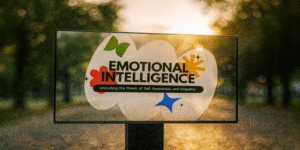Once a research topic is clearly defined, the next critical stage in the research process is conducting a literature review. The literature review plays a central role in ensuring that the study is grounded in existing knowledge, identifies research gaps, and demonstrates how the new work fits within broader academic debates. According to Hart (2018), the literature review is a “systematic examination of existing knowledge” that enables the researcher to map the intellectual landscape of their field.
This article explores the purpose, process, and significance of reviewing the literature. It examines best practices, outlines common challenges, and presents examples from business, social sciences, and education research.
The Purpose of a Literature Review
A literature review serves multiple purposes. First, it ensures that researchers are not duplicating existing studies unnecessarily (Bryman & Bell, 2015). For example, if a researcher is exploring digital consumer behaviour, they must review existing works such as Chaffey and Ellis-Chadwick (2019), who provide frameworks for understanding how digital marketing influences consumer decision-making. By doing so, the researcher avoids repeating established findings and instead contributes something original.
Second, the review highlights gaps in knowledge. For instance, while much has been written about the role of social media in marketing, fewer studies have explored how artificial intelligence tools (e.g., chatbots) influence consumer trust (Luo et al., 2019). Identifying such gaps allows the researcher to justify the relevance of their project.
Third, the review establishes the theoretical foundation of the study. By drawing on established theories—such as Ajzen’s (1991) Theory of Planned Behaviour or Rogers’ (2003) Diffusion of Innovations—researchers can position their work within accepted frameworks. This not only strengthens the academic quality of the research but also improves its credibility.
Sources of Literature
An effective review requires consulting a range of sources:
- Textbooks – These provide foundational knowledge and theoretical frameworks. For example, Saunders, Lewis and Thornhill’s (2019) Research Methods for Business Students is widely used in management and business studies.
- Academic journals – Peer-reviewed articles offer up-to-date research findings. Journals such as Journal of Business Research and British Journal of Sociology provide empirical insights that textbooks may not cover.
- Conference papers – These can reveal emerging trends before they appear in journals (Sharp, Peters & Howard, 2017).
- Credible online sources – Reports from organisations such as the OECD or World Bank offer statistical data and policy insights. However, sources must be evaluated critically for reliability and bias.
A strong literature review draws upon a balanced mixture of these resources, demonstrating both breadth and depth of understanding.
The Process of Reviewing the Literature
1.0 Defining Keywords
Researchers must first identify keywords and search terms related to their topic. For example, a study on sustainable fashion might use terms such as “ethical consumption”, “fast fashion”, and “consumer attitudes towards sustainability” (Henninger et al., 2016).
2.0 Systematic Searching
Academic databases such as Scopus, Web of Science, and Google Scholar are crucial for locating high-quality sources (Booth, Sutton & Papaioannou, 2016). A systematic search strategy ensures that important studies are not overlooked.
3.0 Reading and Categorising
As sources are collected, researchers must categorise them into themes. For example, literature on digital marketing might be grouped into social media marketing, search engine optimisation, and consumer psychology.
4.0 Critical Evaluation
A review should not be a simple summary of past works. Instead, it requires critical evaluation—analysing strengths, weaknesses, methodologies, and biases. For example, while survey-based studies provide large data sets, they may not capture the depth of consumer emotions (Silverman, 2020).
5.0 Synthesis
Finally, the literature must be synthesised into a coherent narrative. This involves connecting themes, identifying contradictions, and showing how existing knowledge informs the proposed research (Hart, 2018).
Importance of Critical Evaluation
A common mistake among novice researchers is to treat a literature review as a descriptive summary. However, the true value lies in critically engaging with the material. As Jesson, Matheson and Lacey (2011) emphasise, critical reviewing demonstrates understanding, originality, and scholarly rigour.
For example, when reviewing studies on remote learning, one might note that quantitative surveys show improvements in student flexibility (Means et al., 2014), but qualitative research reveals challenges in student motivation and digital equity (Stone & Springer, 2019). By highlighting these contradictions, the researcher can position their study as addressing an unresolved debate.
Examples of Effective Literature Reviews
Example 1: Business Research
In a study on leadership in SMEs, Bolden et al. (2016) combined classic theories of leadership with recent findings on entrepreneurial leadership styles. Their review identified a gap: while much is known about leadership in large corporations, less research explores context-specific leadership in small firms.
Example 2: Education
In exploring inclusive education, Florian and Black-Hawkins (2011) reviewed both policy frameworks and classroom practices. Their critical analysis showed inconsistencies between government policy rhetoric and actual teacher practices, leading to recommendations for teacher training.
Example 3: Health Sciences
In reviewing literature on patient-centred care, Epstein and Street (2011) identified the importance of communication between doctors and patients. Their synthesis of evidence from psychology, sociology, and medicine created an interdisciplinary foundation for new research.
These examples illustrate how literature reviews not only summarise past work but also build bridges across disciplines and point towards future directions.
Challenges in Conducting a Literature Review
While literature reviews are essential, they present several challenges:
- Information overload: With vast numbers of publications available, researchers may struggle to filter relevant studies (Booth et al., 2016).
- Bias: Selecting only supportive studies can create a skewed picture (Tranfield, Denyer & Smart, 2003).
- Access issues: Paywalls can limit access to journals, making it harder for students to obtain peer-reviewed work.
- Time management: A comprehensive review requires significant planning to avoid becoming overly time-consuming.
To overcome these challenges, researchers are encouraged to use reference management tools (e.g., EndNote, Zotero) and adopt systematic review methods where appropriate.
A literature review is a cornerstone of academic research. It ensures that the researcher is building on existing knowledge, identifies gaps in the field, and establishes the theoretical and methodological framework for the study. Importantly, a literature review is not just descriptive but critical and analytical, evaluating the relevance, quality, and contribution of past work.
By drawing upon diverse sources—textbooks, journal articles, conference papers, and reputable online resources—the review equips the researcher with a comprehensive understanding of their field. Through systematic searching, critical evaluation, and thematic synthesis, the literature review ultimately strengthens the credibility and originality of research.
References
Ajzen, I. (1991). The theory of planned behaviour. Organisational Behaviour and Human Decision Processes, 50(2), 179–211.
Booth, A., Sutton, A. and Papaioannou, D. (2016). Systematic Approaches to a Successful Literature Review. 2nd ed. London: Sage.
Bolden, R., Jones, S., Davis, H. and Gentle, P. (2016). Developing and sustaining shared leadership in higher education. Leadership Foundation for Higher Education.
Bryman, A. and Bell, E. (2015). Business Research Methods. 4th ed. Oxford: Oxford University Press.
Chaffey, D. and Ellis-Chadwick, F. (2019). Digital Marketing: Strategy, Implementation and Practice. 7th ed. Harlow: Pearson.
Epstein, R.M. and Street, R.L. (2011). The values and value of patient-centred care. Annals of Family Medicine, 9(2), pp.100–103.
Florian, L. and Black-Hawkins, K. (2011). Exploring inclusive pedagogy. British Educational Research Journal, 37(5), pp.813–828.
Hart, C. (2018). Doing a Literature Review: Releasing the Research Imagination. 2nd ed. London: Sage.
Henninger, C.E., Alevizou, P.J. and Oates, C.J. (2016). What is sustainable fashion? Journal of Fashion Marketing and Management, 20(4), pp.400–416.
Jesson, J., Matheson, L. and Lacey, F. (2011). Doing Your Literature Review: Traditional and Systematic Techniques. London: Sage.
Joy, A., Sherry, J.F., Venkatesh, A., Wang, J. and Chan, R. (2012). Fast fashion, sustainability, and the ethical appeal of luxury brands. Fashion Theory, 16(3), pp.273–295.
Luo, X., Tong, S., Fang, Z. and Qu, Z. (2019). Frontiers: Machines vs. humans: The impact of artificial intelligence chatbot disclosure on customer purchases. Marketing Science, 38(6), pp.937–947.
Means, B., Toyama, Y., Murphy, R., Bakia, M. and Jones, K. (2014). The effectiveness of online and blended learning: A meta-analysis of the empirical literature. Teachers College Record, 115(3), pp.1–47.
Rogers, E.M. (2003). Diffusion of Innovations. 5th ed. New York: Free Press.
Saunders, M., Lewis, P. and Thornhill, A. (2019). Research Methods for Business Students. 8th ed. Harlow: Pearson.
Silverman, D. (2020). Interpreting Qualitative Data. 6th ed. London: Sage.
Stone, C. and Springer, M. (2019). Interactivity, connectedness and ‘teacher-presence’: Engaging and retaining students online. Journal of Further and Higher Education, 43(10), pp.1–13.
Tranfield, D., Denyer, D. and Smart, P. (2003). Towards a methodology for developing evidence‐informed management knowledge by means of systematic review. British Journal of Management, 14(3), pp.207–222.
Yin, R.K. (2018). Case Study Research and Applications: Design and Methods. 6th ed. Los Angeles: Sage.









